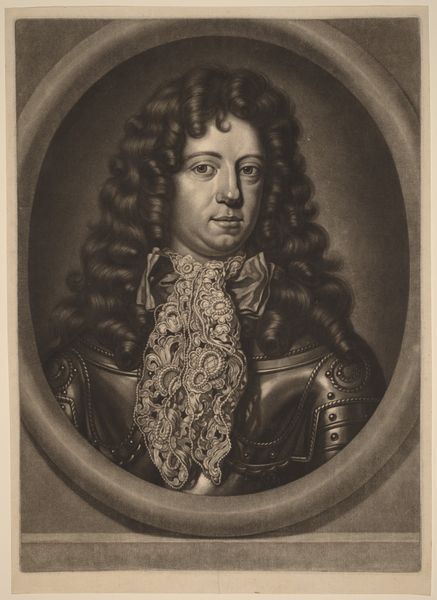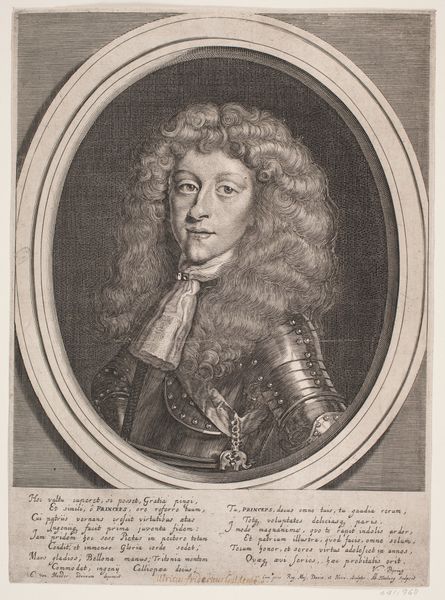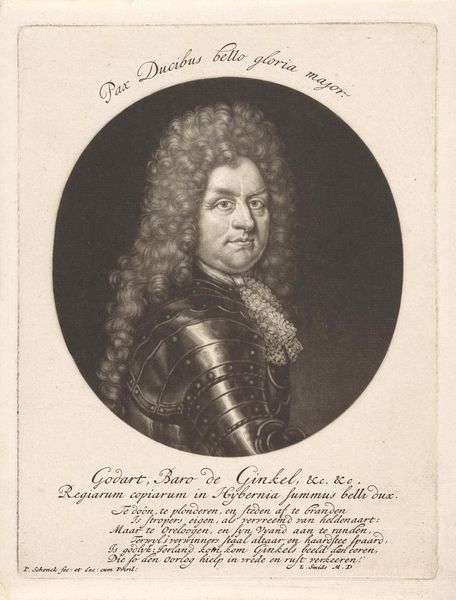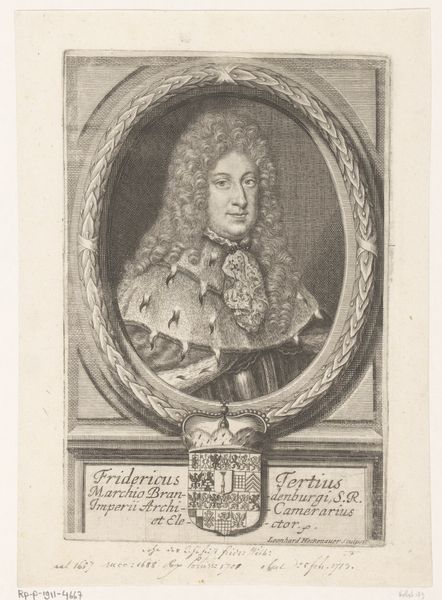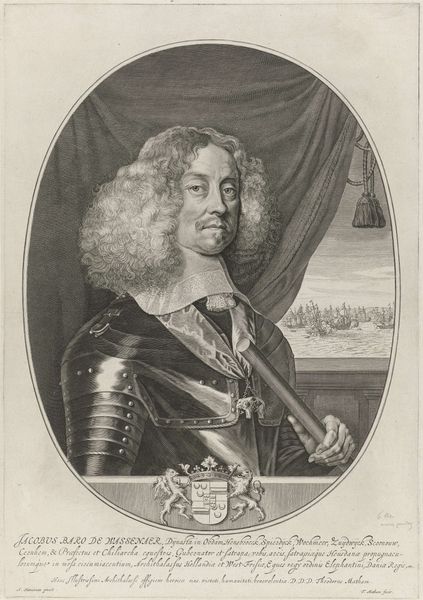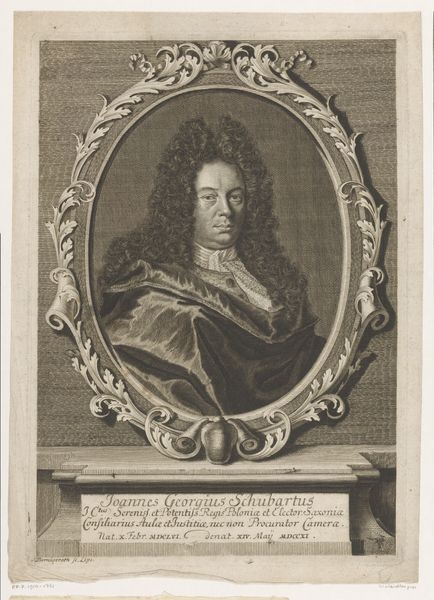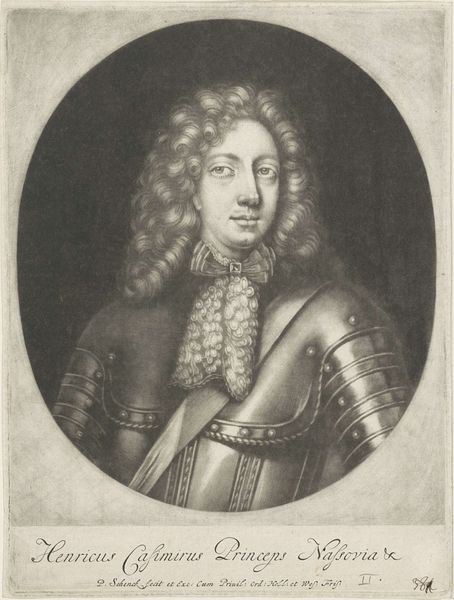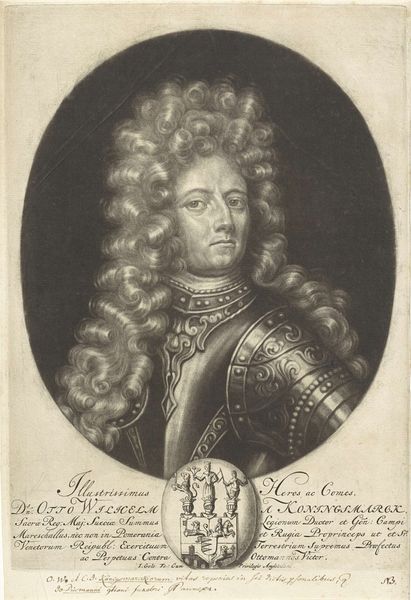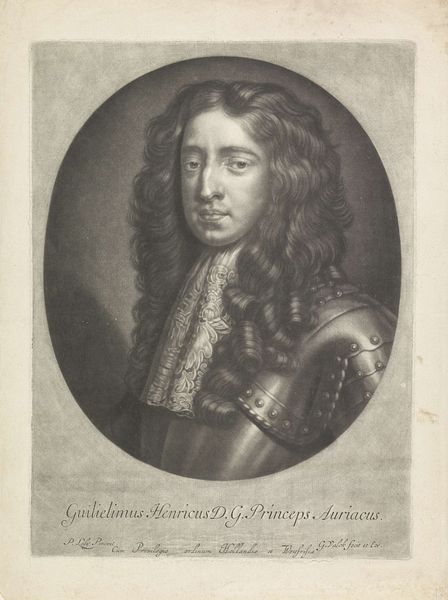
print, engraving
#
portrait
#
baroque
# print
#
old engraving style
#
14_17th-century
#
history-painting
#
engraving
Dimensions: height 149 mm, width 92 mm
Copyright: Rijks Museum: Open Domain
Editor: This is "Portret van Georg von Hessen-Darmstadt," a Baroque-style print by Martin Bernigeroth, created sometime between 1699 and 1733. It's striking how the figure is both imposing and yet confined by the etching's fine lines. What historical insights does this portrait offer? Curator: The portrait itself speaks volumes about power and status in the late 17th and early 18th centuries. Consider the subject, Georg von Hessen-Darmstadt. His armor and elaborate wig are not simply aesthetic choices, but conscious displays of authority. What do you notice about the inscription at the bottom? Editor: It looks like it mentions him being a General and Governor in Spain under King Charles III. Curator: Precisely. Prints like these played a vital role in circulating images of important figures. It solidified their image and influence across geographical boundaries. It wasn’t merely about representation, but about constructing a carefully curated persona for public consumption, shaping narratives of leadership and governance. Do you see this as purely celebratory, or does the very act of needing such an image suggest something more complex? Editor: Hmm, I see what you mean. Perhaps there was a need to reinforce his authority or legitimacy in the eyes of the public or maybe even his peers? Curator: Exactly. It begs the question, how did these widely distributed images contribute to maintaining political order and cultural norms in the Baroque period? Considering the context of its creation and dissemination offers us a more nuanced understanding. Editor: It’s fascinating to see how an image can be a political tool. Thanks for illuminating that! Curator: And thank you for the fresh perspective; I hadn't considered it that way myself before.
Comments
No comments
Be the first to comment and join the conversation on the ultimate creative platform.
